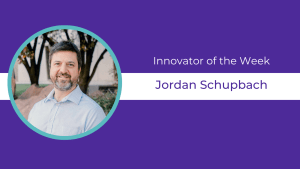Fostering local government that does ‘more listening’ and ‘less talking’

Title: Director of Engagement & Innovation
City: Amarillo, Texas
Jordan Schupbach used to lead Amarillo’s efforts to “communicate to” residents. Now, his job is about “engaging with” them. It’s a subtle but important shift, and it came about as a result of his participation in an innovation training offered through the Bloomberg Harvard City Leadership Initiative.
Schupbach was Amarillo’s communications director when he joined colleagues from across city hall last year for the training. Together, they tackled the problem of illegal dumping, learning along the way how to build solutions with residents using methods from human-centered design. For example, through multiple rounds of community engagement and discussions with stakeholders, they developed the idea of creating small community dump areas where people can dispose of large items easily without having to travel far.
The experience of bringing residents into problem solving in new ways worked so well that city leaders have asked Schupbach to make it his job. In his new role as Director of Engagement & Innovation, he’s tasked with helping agencies develop solutions with the community. While Schupbach says this is a “natural progression of the buildout of a modern communications department,” he acknowledges it will require leading a big culture shift in local government. “We need to take more time listening,” he says, “and less time talking.”
This intentional effort to slow down and listen to community members has been a critical part of several major initiatives now underway in Amarillo, including the city's efforts to serve the homeless population with a new center called Transformation Park. Based on the input of numerous community partners and people who are themselves experiencing homelessness, the project will offer an array of services, including emergency and transitional shelters, as well as amenities such as restrooms, showers, and laundry facilities. The city will incorporate permanent housing options, coupled with supportive case management, housing vouchers, and ongoing resources aimed at guiding individuals through the journey from unsheltered homelessness to a stable and sustainable living situation.
Pro Tip: ”Change that's positive for everyone needs everyone to be involved in determining what that change is.”

